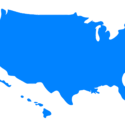The November 3rd plebiscite was a yes/no vote on statehood, like the plebiscites in Hawaii and Alaska before they became states.
Hawaii’s plebiscites
In 1919, Jonah Kūhiō Kalanianaʻole presented a statehood bill for Hawaii. Over the next 40 years, there were 48 more statehood bills presented. There were plenty of arguments against statehood for Hawaii, including Democrats’ fears that the Republican territory would become a Republican state (it didn’t) and lessen their power. Bigger states worried that Hawaii’s smaller population would give them more voting power per individual — something that is currently true about small states like Wyoming, which has three times the voting power per voter of California.
During this time, in 1937, there was a congressional hearing on the subject which determined that Hawaii was eligible for statehood. The committee recommended a yes/no statehood plebiscite for Hawaii. This vote was held in 1940, and statehood got the majority of votes.
The vote was not binding. Plebiscites, by their very nature, are not binding on Congress. They are a way of finding out the opinions of the people. In 1940, Congress found out that Hawaii’s voters wanted statehood. In just the same way, in 2020, Congress found out that Puerto Rico’s voters — who voted for statehood in 2012 and 2017, too — wanted statehood.
This didn’t end the controversy. It was not until 1959 that Congress approved statehood for Hawaii. They asked for another plebiscite, to be sure that Hawaii still wanted statehood. Statehood passed overwhelmingly, and Hawaii became a state.
Alaska’s plebiscites
The first efforts to gain statehood for Alaska began in 1916, but there was a lot of controversy over the question.
Alaska’s statehood movement got a boost from their participation in World War II, and the post-war emphasis on democracy as a basic tenet of the United States. The Governor of Alaska arranged for a plebiscite on statehood in 1946. 23% of the voters turned out and statehood got a clear majority of the votes.
This level of voter participation is equal to Puerto Rico’s 2017 plebiscite.
As always, the plebiscite was nonbinding, and controversy continued. No local vote can be binding on Congress. In fact, the votes of one Congress are not binding on a future Congress.
It was not until 1958 that the Congress got around to passing a statehood bill for Alaska. They requested a new plebiscite and statehood won again.
Yes/no statehood votes
Some have pointed out that the Alaska and Hawaii statehood yes/no votes in the 1950s were votes ratifying and accepting the statehood bills already passed in Congress. The 2020 yes/no vote in Puerto Rico was not a vote of that kind. But it was a vote like the yes/no votes in Alaska and Hawaii in the 1940s: yes/no votes showing the the people of the territories wanted statehood.
Both those territories had spent decades working for statehood. They worked for many more years before being admitted as states.
But Puerto Rico is in a different position from Alaska and Hawaii in the 1940s. Those territories had small populations. Puerto Rico has a larger population than 20 of the current states. Alaska and Hawaii were distant from the U.S. mainland and had complex and politicized economic situations separate from commerce in the states. Puerto Rico is fully integrated into the economic life of the United States, apart from the discrimination the Island experiences as a territory.
“Modern inventions have annihilated distance,” a Congressional report announced in 1946. “Juneau today is closer to the American mainland in time than the cities of Boston and New York were to the capital in the early days of the nation. Alaska is closer to the seat of the government today than all but the immediately adjacent states were when Washington first became the capital of the United States. With efficient and seven-hour service for and rapid communication by cable, radio, or telephone, mail or passenger planes, Alaska can no longer be characterized as isolated.”
How much more true is this now, with the internet drawing us all closure together!
There is no excuse for delay. Tell your representatives that you want Puerto Rico statehood now.








One response
No!